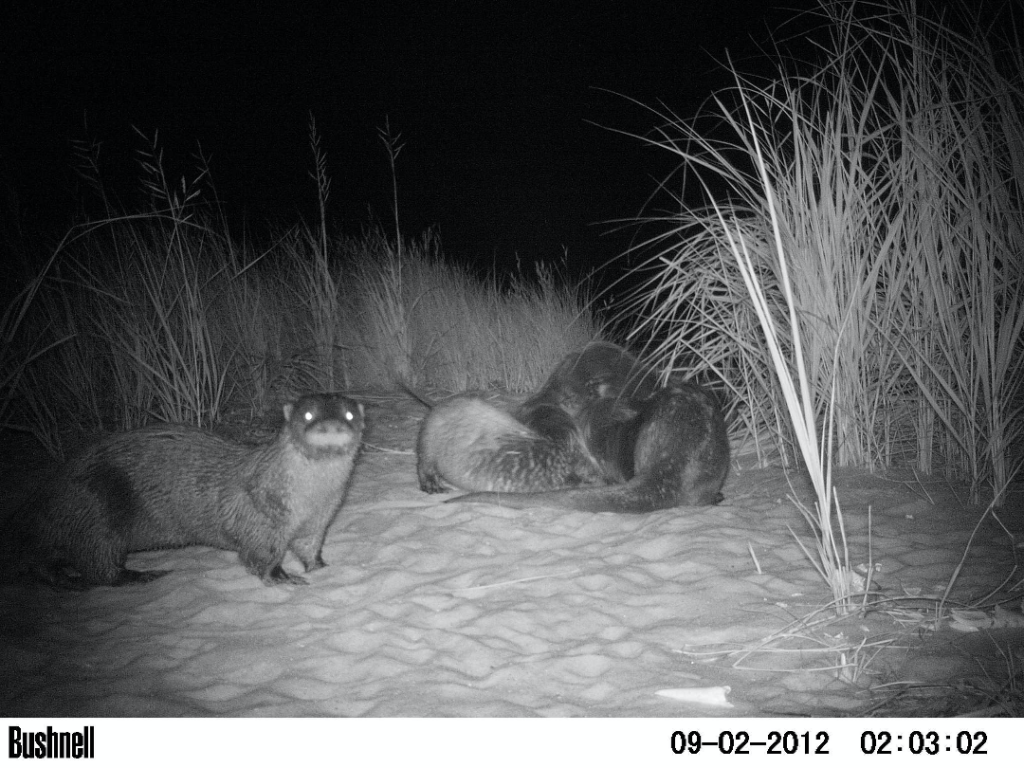The Essence of Summer:
By Emily Reddington & Liz Olson
Every year as the sun sets and the Sturgeon Moon rises over Edgartown Great Pond, neighbors from around the Pond meet on kayaks to celebrate summer. This annual gathering is an occasion to soak in the essence of summer and celebrate the natural world.
The following narrative describes the event in 2019.
As we reach the closing days of astronomical summer, many of us have already transitioned to our fall schedules and are yearning for the sweetness of summer. Every season has a time where you experience the peak of its magic—its essence or character. For summer, that time might be the Sturgeon Moon in August. The August full moon is called the Sturgeon Moon because Native American tribes considered this moon the peak time to catch sturgeon in the Great Lakes. If we tried to bottle the magic of summer, the warmth of summer nights, gardens bursting with fresh produce, local waters teaming with life, and the laughter of our friends around us, the evening of the August full moon would be the ideal time.
Every year as the sun sets and the Sturgeon Moon rises over Edgartown Great Pond, neighbors from around the Pond meet on kayaks to celebrate summer. This annual gathering is an occasion to soak in the essence of summer and celebrate the natural world. Biologists Elizabeth Olson of BiodiversityWorks and Emily Reddington of Great Pond Foundation, guided Pond neighbors on a paddle and discussion of the Edgartown Great Pond ecosystem.

Edgartown Great Pond is an 890-acre brackish coastal pond located on the south shore of Martha’s Vineyard and is separated from the Atlantic Ocean by a barrier beach which is manually breached on a semi-regular (3-4x/year) basis to reduce nutrient impacts, lower the elevation, and recharge the Pond with salty and oxygenated seawater. From 2008 to 2018, because of a concerted conservation and restoration efforts by Great Pond Foundation, the Town of Edgartown, the Martha’s Vineyard Shellfish Group, other island non-profits, and numerous private citizens, the health of Edgartown Great Pond has improved visually and quantifiably. Eelgrass meadows have been expanding throughout the Great Pond, the oyster population has rebounded and supported several seasons of commercial harvest, and the water quality and overall health of the ecosystem has increased.
The health of the Pond can be thought of like the immune system of the human body. The stronger the ecosystem is as a whole, the better it will be able to respond to imbalances or stressors. When the human body is strong and healthy, it tends to respond to colds or injuries more quickly and with resilience. What we feed our bodies and how we treat them has an impact on our health. The same is true for a pond ecosystem. What we put in it, and how we manage or care for it, has an impact on its health and its ability to respond to stress.

Maintaining improved water quality and preserving the Pond’s ecological resources requires a dedication to the protection of this delicate environment. The health of the Pond is essential to all the members of the Pond community. Animals and plants within the Pond require good water quality in order for their habitat to be in balance and provide the food and shelter they require. One of the most charismatic members of the Pond community is the playful and elusive coastal river otter.
If you are lucky you may get the chance to see these elusive creatures swimming in the pond beside your boat or loping across the barrier beach. Signs of river otters, however, are not as elusive and usually easy to spot. At the head of the coves, along the barrier beach or a spit of land jutting out into the pond; always near water and often amongst the dune grass, shrubs, or blooming swamp mallow there is an otter latrine site. A worn trail with piles of old and fresh scat filled with fish scales and crab parts are clear signs you are at one of these sites. Otters use latrine sites as a form of communication letting other otters know who has been passing by and what they had for dinner. Otters are very habitual about these sites. They use them for many, even possibly longer than our lifetimes. Places like Edgartown Great Pond provide an abundant food source for our island otter population.

Based on previous studies by BiodiversityWorks we know the island’s otter population is doing well. With many species struggling in our changing world it is good to see such a beloved creature thriving. However, to keep these charismatic creatures common we have to continue to work hard to preserve and protect our pond ecosystem. A healthy pond will allow the eelgrass to grow, the fish and crabs to be plentiful, and give otters ample to feast on.
As the adventure came to a close and neighbors paddled back to shore, the sun continued to fill the sky with pink and orange rays. Slowly the bright red-orange Sturgeon Moon poked out amidst the clouds. It was truly a perfect summer evening. When we slow down and soak in the splendor of nature, it clear how lucky we all are to live in such a beautiful place and have a community who cares about the Pond and all its creatures.


